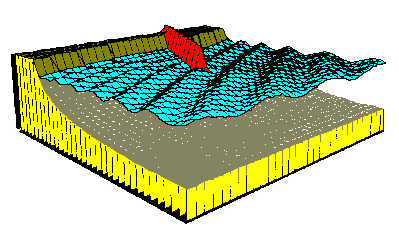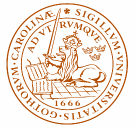

GENEralized model for SImulating
Shoreline
change
GENESIS is a shoreline response numerical modeling
system. The model
is adopted as the official shoreline change model of US Army Corps of Engineers.
There are an estimated 1,000 users around the world. The system has the following
properties:
 Accounts for shoreline change by
longshore sediment transport gradients
Accounts for shoreline change by
longshore sediment transport gradients
 The longshore extent is about 5 to
100 km
The longshore extent is about 5 to
100 km
 The temporal extent is about 1 to
20 years
The temporal extent is about 1 to
20 years
Model Capabilities:
 Internal wave transformation module
Internal wave transformation module
 Almost arbitrary numbers of groins,
detached breakwaters, beach fills & seawalls
Almost arbitrary numbers of groins,
detached breakwaters, beach fills & seawalls
 Almost any combination of structures
& beach fills
Almost any combination of structures
& beach fills
 Bypassing & transmission of sand
at groins & jetties
Bypassing & transmission of sand
at groins & jetties
 Multiple diffraction from structures
Multiple diffraction from structures
 Multiple wave trains
Multiple wave trains
 Wave transmission through detached
breakwaters
Wave transmission through detached
breakwaters
 Tombolo development inside detached breakwaters
Tombolo development inside detached breakwaters
 Sediment transport from breaking waves
combined with other currents (tidal, wind,...)
Sediment transport from breaking waves
combined with other currents (tidal, wind,...)
 Accounts for pre-specified stable
regional or local contours
Accounts for pre-specified stable
regional or local contours
 Algorithm for
variable, time-dependent transmission coefficient
Algorithm for
variable, time-dependent transmission coefficient
Model Limitations:
 No wave reflection
No wave reflection
 No tombolo development
No tombolo development
 No provision for changing tide level
No provision for changing tide level
 Sediment transport produces by wave-generated
currents only.
Sediment transport produces by wave-generated
currents only.
 Basic limitations of shoreline change
modeling theory
Basic limitations of shoreline change
modeling theory
GENESIS has been developed in cooperation between:
 |
Dept. of Water Resources Engineering (TVRL)
Lund Institute of Technology, University of Lund
Lund, Sweden
|
 |
Coastal and Hydaulics Laboratory (former CERC)
US Army Waterways Experiment Station
Vicksburg, MS, USA
|
Other items:
 Water Resources
Engineering Homepage
Water Resources
Engineering Homepage
Last update: 05-05-10

![]() Tombolo development inside detached breakwaters
Tombolo development inside detached breakwaters![]() Sediment transport from breaking waves
combined with other currents (tidal, wind,...)
Sediment transport from breaking waves
combined with other currents (tidal, wind,...)![]() Accounts for pre-specified stable
regional or local contours
Accounts for pre-specified stable
regional or local contours![]() Algorithm for
variable, time-dependent transmission coefficient
Algorithm for
variable, time-dependent transmission coefficient

![]() Water Resources
Engineering Homepage
Water Resources
Engineering Homepage